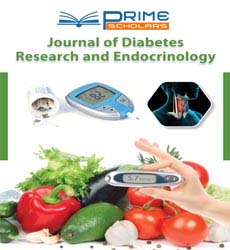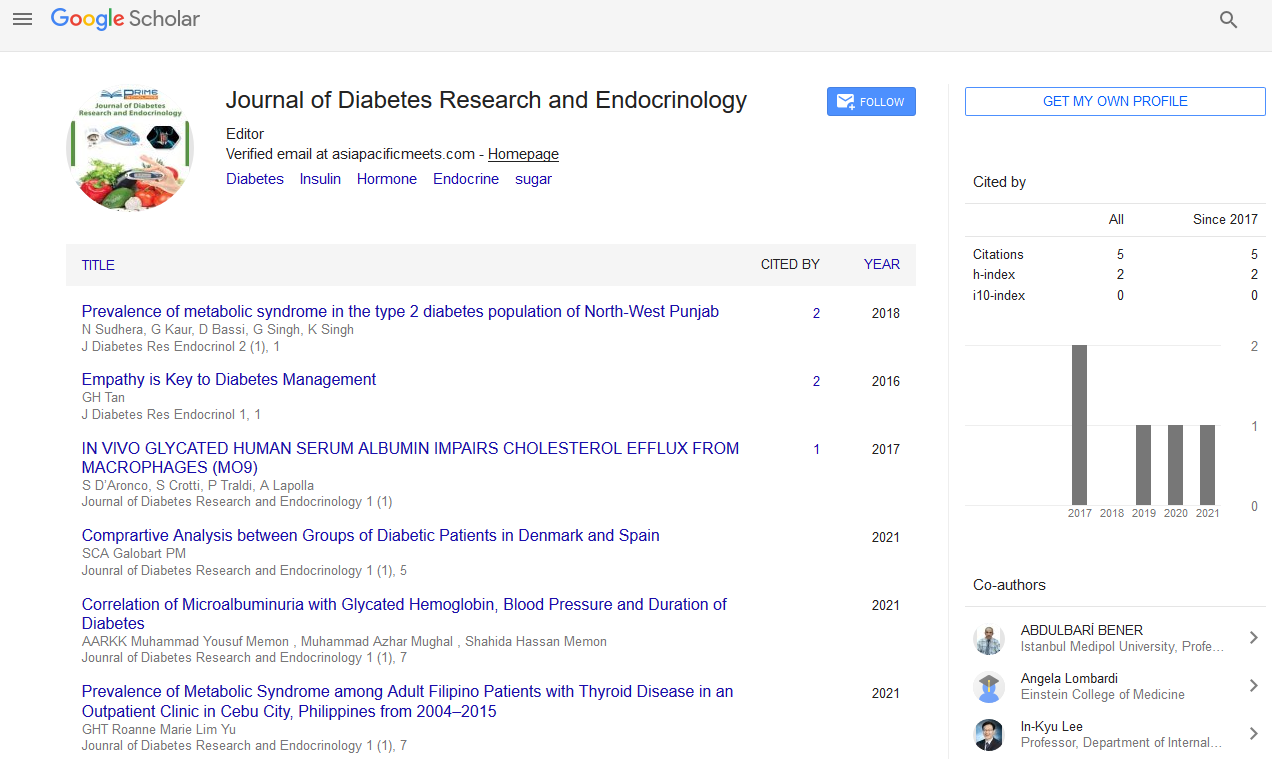Jack Walton*
Department of Medicine,University of Osmania, Hyderabad, Telangana, India
- *Corresponding Author:
- Jack Walton
Department of Medicine,
University of Osmania,
Hyderabad,
Telangana,
India,
E-mail: jackwalton@gmail.com
Received Date: November 8, 2021; Accepted Date: November 22, 2021; Published Date: November 29, 2021
Citation: Walton J (2021) A Note on Diabetes and Free Radicals. J Diabetes Res Endocrinol Vol.5 No.S2:003.
Description
Diabetes is a chronic disease in which the body does not produce insuffient insulin resulting in the blood and glucose in balance in the body. The World health organization
estimates that maximum people have diabetes worldwide. Long
term diabetes is often associated with secondary complications,
including cerebral ischemia, heart disease, high blood pressure,
blindness, kidney and nervous system diseases, dental disease
complications of pregnancy, among others. Cerebral ischemia
and heart disease account for 84% of mortality among diabetics
in the USA alone. Epidemiological studies suggest that diabetes
increases the risk of cerebral ischemi by 2-4 fold over nondiabetic
population and also exacerbates studies are also
confirmed in studies of experimental cerebral ischemia in animal
models of diabetes. Free radicals play an important role in
cerebral ischemic damage in diabetics.
Free radicals are atoms or groups of that contain an
unpaired electron in their valence shell. Reactive oxygen species
owing to the presence of one unpaired electron in an oxygen
atom and a nitrogen atom, respectively. In biological systems,
free radicals are produced naturally and are essential in certain
cellular and homeostatic functions. The majority of ROS are
produced during the mitochondrial respiration. With an
abundance of oxidation-reduction reactions occurring at each
complex of the electrons will occasionally diffuse from these
complexes and if one is accepted by molecular oxygen it
becomes the superoxide anion. Oxygen serves as the precursor
for almost all other ROS, which include hydrogen peroxide and
the hydroxyl radical. Nitric oxide is the foundation for most
reactive nitrogen species, which include highly oxidative free
radical peroxynitrite. More complex organisms have evolved
ways to use these reactive oxygen species and reactive nitrogen
species as signalling molecules in a wide variety of physiological
functions. By performing the tasks they process intergral roles in
the normal functioning of cells that include signal transduction,
vasodilatation and defense against bacteria.
Antioxidants comprise a type of defence mechanism against
free radicals, as they protect cells by behaving against free
radicals, as they protect cells by behaving like scavengers of free
radicals and thus neutralize their damaging capacity. The entire
spectrum of antioxidants can be divided into two different
classes based upon their mechanism of action, these are the
enzyme anti-oxidanbts and the non-enzyme anti-oxidants.
Enzyme anti-oxidants include superoxide dismutase catalase and
glutathione peroxidase among others, which scavenge free
radicals by converting them into less reactive molecules which
later may be easily metabolized. Non-enzyme anti-oxidants
cover a wider range of compounds, such as the anti-oxidant
vitamins A, C and E and glutathione which compete for oxidation
by free radicals with other substrates of molecules that should
not otherwise undergo oxidation.
Normally, the cells anti-oxidant defence system prevents
oxidative damage by neutralizing free radicals effectively, and
the resultant products are then metabolized by the
complementary anti-oxidant enzymes. However, in numerous
pathological states that include but are not limited to ALS,
parkinsons disease, Alzheimers disease’, certain cancers heart
attack, stroke and diabetes, avariety of mechanism lead to the
overwhelming generation of free radicals which causes
saturation of the anti-oxidant defense system and finally results
in increased oxidative stress.

